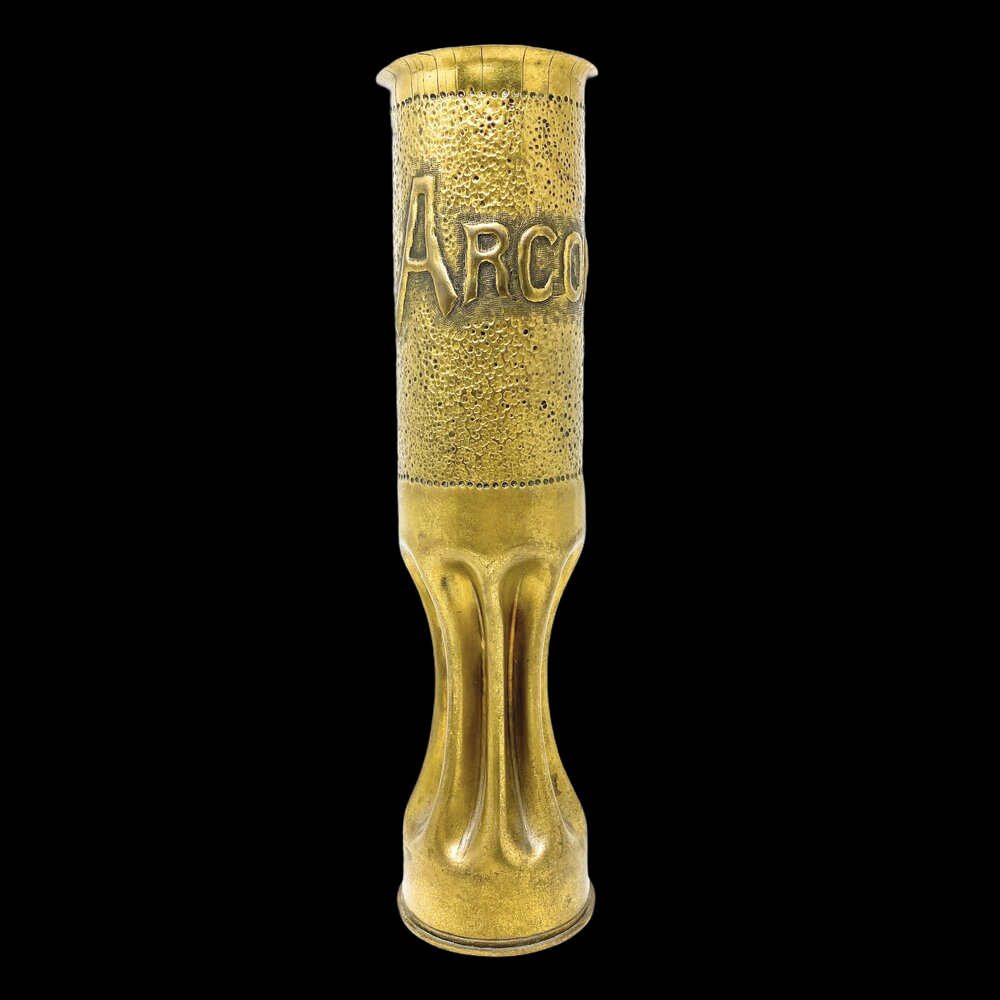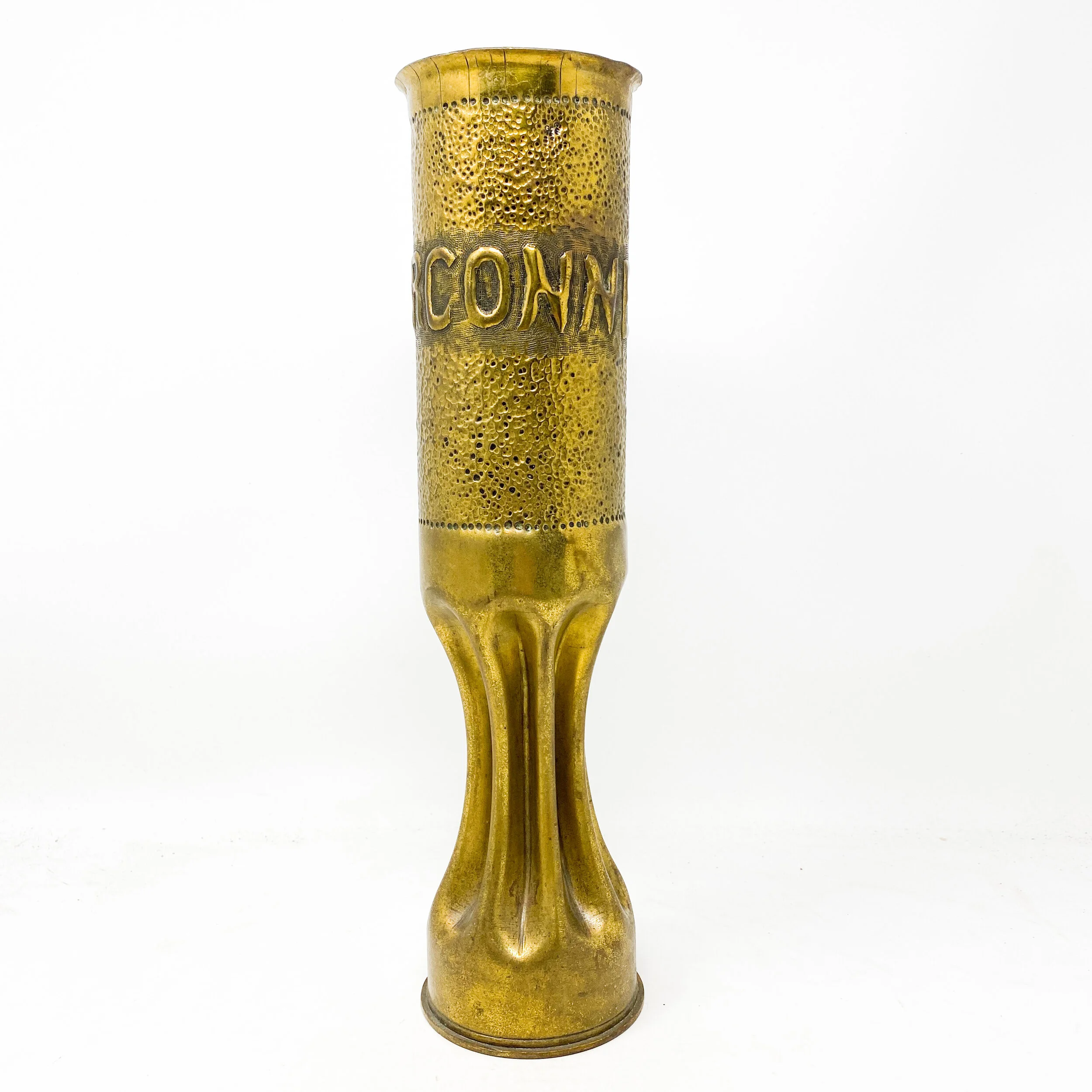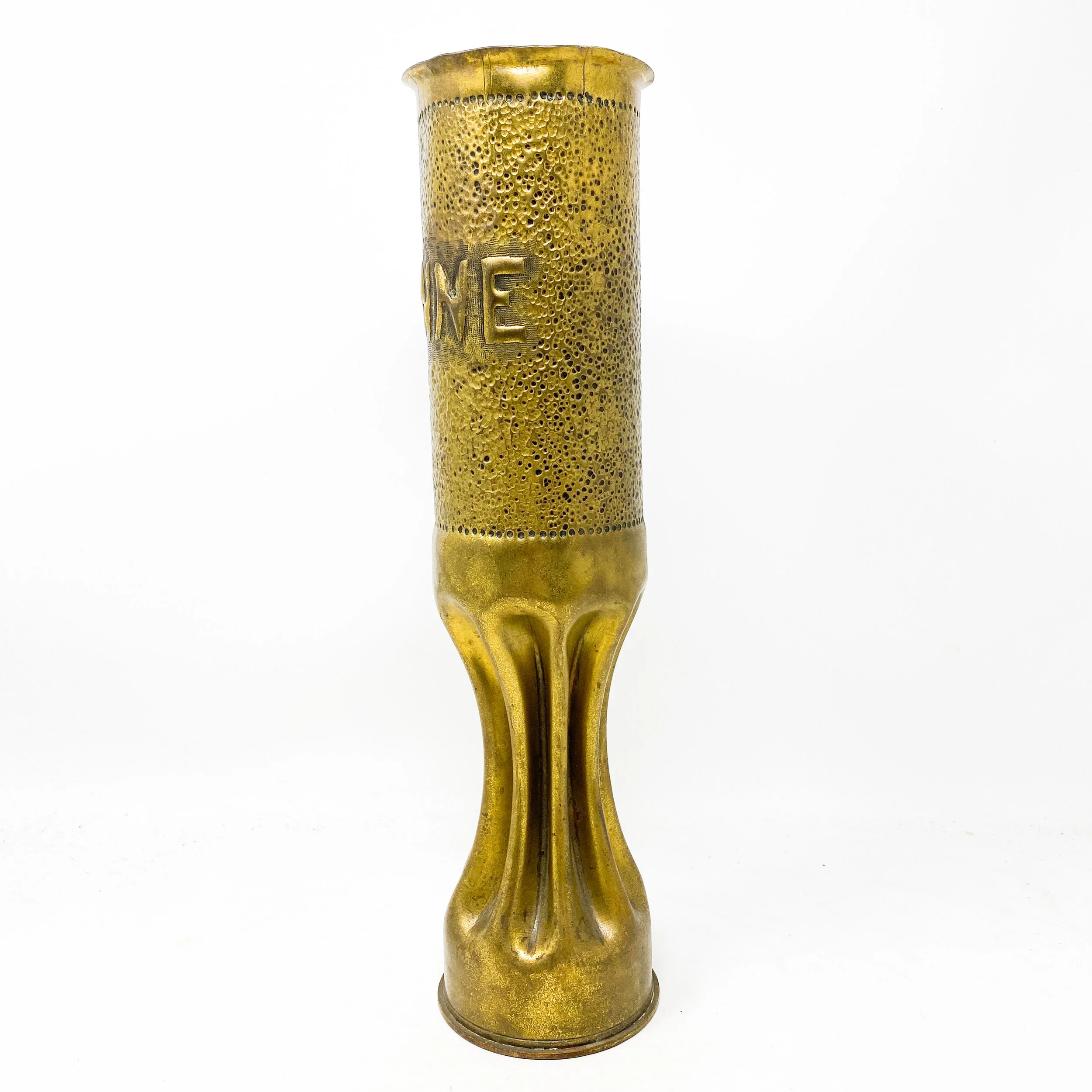'Argonne' Engraved Artillery Shell Casing









'Argonne' Engraved Artillery Shell Casing
Measures: 13 inches
Inscriptions: ‘Argonne’
History of Trench Art:
During leisure hours at the front, skilled soldiers created trench art from the remnants of war such as discarded bullets and artillery shell casings. Many of these remnant of war were done with their own equipment and leftover items, but also by items captured and left by enemy soldiers. Trench art objects are holders of soldiers’ memories and reminders of the conflict they faced. Made out of recycled war refuse such as shell casings, spent bullets or whatever came to hand, they open a window to the past. They tell us things like where soldiers went and what their surroundings were like. They also give hints about soldiers’ thoughts and actions. Something as simple and functional as a matchbox cover can provide a map of a soldier’s movements while other, more decorative examples, show a desire to find and create beauty, to camouflage war in art. Trench art can be made of any number of things. Many objects were made out of the scraps created by war. This included ammunition shell cases, bullet casings, shrapnel, and pieces of destroyed buildings or downed planes. These materials would all have been readily available in the war zones to soldiers, their prisoners of war and to civilians still in the area.
Canon de 75 modèle 1897:
The French 75 was designed as an anti-personnel weapon system for delivering large volumes of time-fused shrapnel shells on enemy troops advancing in the open. After 1915 and the onset of trench warfare, other types of battlefield missions demanding impact-detonated high-explosive shells prevailed. By 1918 the 75s became the main agents of delivery for toxic gas shells. The 75s also became widely used as truck mounted anti-aircraft artillery. They were also the main armament of the Saint-Chamond tank in 1918.
Battle of the Argonne:
The Meuse-Argonne Offensive (also known as Battles of the Meuse-Argonne and the Meuse-Argonne Campaign) was a major part of the final Allied offensive of World War I that stretched along the entire Western Front. It was fought from September 26, 1918 until the Armistice of November 11, 1918, a total of 47 days. The Meuse-Argonne Offensive was the largest in United States military history, involving 1.2 million American soldiers. It was one of a series of Allied attacks known as the Hundred Days Offensive, which brought the war to an end. The battle cost 28,000 German lives, 26,277 American lives and an unknown number of French lives. It was the largest and bloodiest operation of World War I for the American Expeditionary Force (AEF) even if, given the scale of other battles on the Western Front, its size was limited and the operation itself secondary as it was far from the main offensive axis. It was the deadliest battle in American history. U.S. losses were exacerbated by the inexperience of many of the troops, the tactics used during the early phases of the operation and the widespread onset of the influenza outbreak called the "Spanish Flu". Meuse-Argonne was the principal engagement of the AEF during World War I.